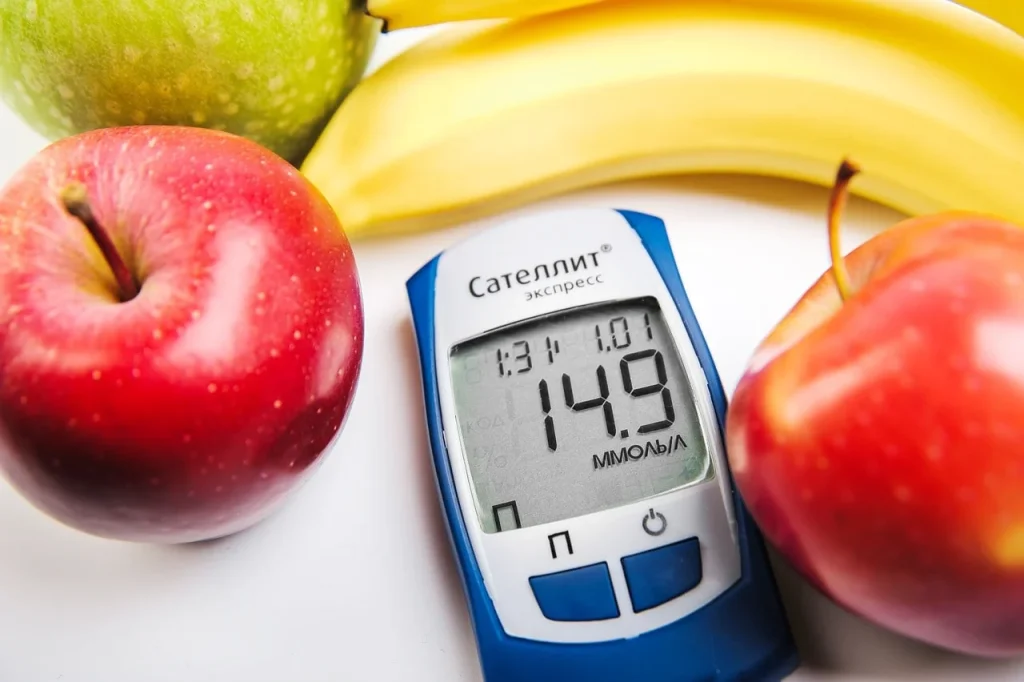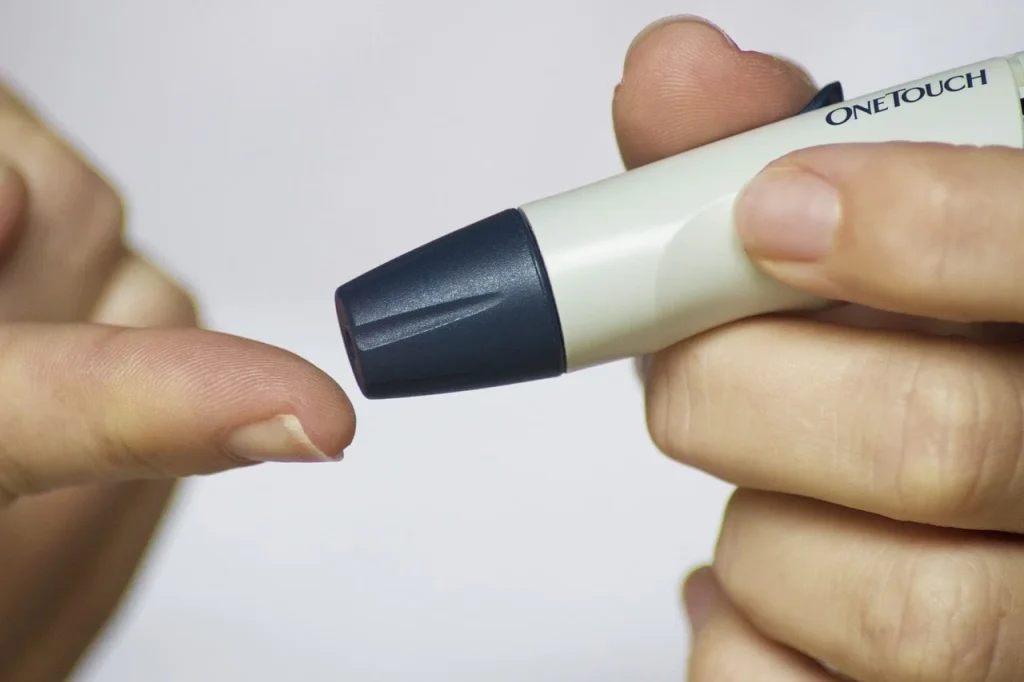Did you know that over 400 million people worldwide are living with diabetes? This complex condition affects so many, yet there are numerous misconceptions surrounding it.
In this blog, we’ll explore some interesting facts about diabetes, shedding light on what it really is, how it affects individuals, and what can be done to manage it. Whether you or someone you know is dealing with diabetes, or you’re simply curious about it, keep reading to discover more about this widespread health issue.
Diabetes is a lousy, lousy disease.
Elaine Stritch
Diabetes Facts
Before we read the facts, keep in mind that a quiz awaits you at the end of this article. Read carefully to test your expertise and prove your knowledge on this important health topic.
- Type 1 and Type 2 are the most common forms, but there are also rare forms such as MODY (maturity-onset diabetes of the young), which involves several gene mutations.
- Doctors can predict susceptibility to Type 1 with nearly 90% accuracy by monitoring the presence of certain autoantibodies.
- The cost of insulin can vary drastically between countries, with some patients in the U.S. spending up to 1000% more than those in other countries.
- Surgeons performed the first successful pancreatic transplant in 1966, offering another potential, although rare, treatment option.
- Despite common beliefs, eating too much sugar alone does not cause Type 2; it develops from a combination of genetic and lifestyle factors.
- One of the earliest treatments for high blood sugar involved prescribing a diet of only fat from meat and zero carbohydrates.
- Certain species of ants can detect increased levels of glucose in urine, a fact that was historically used as a natural diagnostic method.
- Intensive glucose control can reduce the risk of eye disease by 76% in those at risk.
- More than 50% of people with Type 2 initially manage their condition with lifestyle changes alone, without medication.
- Insulin was once so scarce and expensive that it was rationed, with priority often given to children.
- Ancient healers once tasted the urine of suspected sufferers to detect a sweet taste—a rudimentary way of diagnosing the condition.
- In some cultures, Type 1 is known colloquially as “juvenile diabetes” due to its frequent diagnosis in children.
- Scientists are exploring the role of vitamin D in preventing or managing Type 1, with some promising results.

- Extreme low-carb diets can induce a state of ketosis, which some people with Type 2 diabetes use to manage their blood sugar levels.
- Diabetes is one of the leading causes of kidney failure globally.
- The number of people worldwide with the condition is expected to rise to 643 million by 2030.
- An HbA1c test, which measures blood sugar levels over the past three months, is a key diagnostic tool that does not require fasting.
- People with Type 1 can often experience what is known as a “honeymoon period” shortly after diagnosis, where their pancreas still produces a significant amount of insulin.
- In some cases, bariatric surgery has been effective in remission of Type 2 among severely obese patients.
- The prevalence of Type 2 is increasing in children, correlating with rising rates of childhood obesity.
- Artificial pancreases, which combine glucose sensors and insulin pumps, are a developing technology aimed at automating blood sugar management.
- The discovery of insulin in 1921 by Banting and Best was one of the most significant medical breakthroughs of the 20th century, transforming a fatal diagnosis into a manageable condition.
- A dog’s keen sense of smell can be trained to detect when a person’s blood sugar levels are dangerously low or high.
- Exercising muscles absorb glucose at up to 20 times the normal rate, which can drastically lower blood sugar levels.
- Diabetes can impair the healing of wounds, particularly on the feet, which can lead to serious infections.
- Regular moderate alcohol consumption can reduce the risk of developing Type 2 by up to 30% in some studies.
- A condition called Diabetic Dermopathy causes light brown, scaly patches of skin, usually seen on the shins.
- The term “diabetes” is derived from the Greek word diabainein, which means “to pass through,” describing the excessive urination associated with the condition.

- India is sometimes referred to as the Diabetes Capital of the world due to its high number of cases.
- Pregnancy can lead to a temporary form of the condition known as gestational diabetes, affecting a significant number of pregnant women.
- A condition known as Insulinoma, a tumor of the pancreas, can cause excessively low blood sugar levels.
- Chronic stress can significantly impact blood sugar levels, making management more challenging.
- The blue circle is an international symbol used to represent diabetes awareness.
- The death of legendary musician Johnny Cash was partly due to complications related to the condition.
- Snakes were once a symbol associated with healing in ancient cultures, and interestingly, snake venom has been studied for its potential to treat diabetes-related conditions.
- A significant percentage of cats and dogs are also affected, particularly as they age and gain weight.
- An estimated 1 in 3 adults in the U.S. has prediabetes, though 84% of them do not know they have it.
- Darkening of skin folds and creases, particularly around the neck and armpits, can be an early sign of insulin resistance.

- The highest recorded blood sugar level in a surviving patient was approximately 2,656 mg/dl, far exceeding normal levels.
- Flash glucose monitoring, a newer technology, allows for continuous tracking of glucose levels without the need for routine finger pricks.
- Breakthroughs in stem cell research suggest potential future treatments that could regenerate insulin-producing cells in the pancreas.
- The ancient Egyptians mentioned a condition resembling diabetes in their manuscripts, making it one of the earliest documented chronic diseases.
- Insulin is not a cure; it simply allows for the management of the condition.
- Excessive thirst and frequent urination are hallmark symptoms that result from the body’s attempt to rid itself of excess glucose.
- Genetic predisposition plays a significant role, with identical twins having a high rate of shared diagnosis.
- The economic impact of diabetes is enormous, exceeding $825 billion annually worldwide.
- An imbalance in blood sugar levels can lead to mood swings and irritability, impacting mental health.
- Several famous historical figures, including H.G. Wells and Thomas Edison, were affected by diabetes.
- Recent advances in genetic engineering offer hope for a potential “functional cure” through gene therapy.
- The presence of GAD antibodies is used to diagnose Type 1, helping differentiate it from other types, which has implications for treatment strategies.
Diabetes Myths

Now that we’ve covered the facts, let’s continue with the myths. It’s crucial to separate what’s true from what’s merely a myth to fully understand this condition.
- Eating too much sugar causes diabetes
Diabetes is not caused solely by consuming sugar. Type 1 diabetes is influenced by genetics and unknown factors, while type 2 diabetes is more often linked to genetics, lifestyle, and body weight than sugar intake alone. - Diabetes is not a serious disease
Diabetes should be considered very serious. It is often underestimated, but if not managed properly, it can lead to severe complications such as heart disease, kidney damage, and nerve damage. - People with diabetes can’t eat sweets or chocolate
Sweets and chocolate can be consumed by people with diabetes, but they should be eaten in moderation as part of a balanced diet. Blood sugar levels must be monitored and managed accordingly. - If you are overweight, you will definitely develop type 2 diabetes
Being overweight is a risk factor, but it does not guarantee that one will develop type 2 diabetes. Many factors contribute to its onset, including age, genetics, and lifestyle habits. - People with diabetes should eat diabetic foods
“Diabetic” labeled foods offer no special benefit and are often as high in fat and calories as their regular counterparts. A healthy, balanced diet rich in nutrients is recommended over processed “diabetic” options.
No products found.
Diabetes Quotes

We continue our journey with some quotes about diabetes. You can always share more in the comments so I can add them to the list.
Diabetes taught me discipline.
Sonia Sotomayor
Sonia Sotomayor, the U.S. Supreme Court Justice, reflects on how managing her diabetes since childhood has instilled a strong sense of discipline in her personal and professional life.
We’re all moving at such a high rate that we have to grab the frozen dinners and fast food. We actually need to sit down and take the time to plan healthy meals.
Aretha Franklin
Aretha Franklin discussed the challenges of diet management in modern fast-paced life, especially relevant for those managing diabetes.
Life is not over because you have diabetes. Make the most of what you have, be grateful.
Dale Evans
Dale Evans emphasizes the importance of maintaining a positive attitude and gratitude, despite the challenges posed by diabetes.
I decided to turn my diabetes into an opportunity.
Brett Michaels
Brett Michaels, the lead singer of Poison, talks about using his diagnosis as a catalyst to advocate for awareness and lead a healthier lifestyle.
Diabetes is an all-too-personal time bomb which can go off today, tomorrow, next year, or 10 years from now – a time bomb for which there is no cure, but only daily vigilance can disarm.
Mary Tyler Moore
Mary Tyler Moore, an actress and diabetes advocate, highlighted the constant, vigilant management required to live with diabetes and the ongoing search for a cure.
Diabetes FAQ

Moving forward to the FAQs, this is a crucial segment to focus on before you tackle the quiz. These answers will build on what you’ve learned so far, so pay close attention!
- How is diabetes diagnosed?
Diabetes is diagnosed primarily through blood tests, such as the fasting plasma glucose test, the A1C test, which measures average blood sugar over two to three months, and the oral glucose tolerance test. These tests confirm if the blood glucose levels are higher than normal. - Which type of diabetes is more common?
Type 2 diabetes is more common, accounting for about 90% to 95% of all diagnosed cases. It typically develops in adults over the age of 45 but is increasingly seen in younger age groups, including children, adolescents, and young adults. - How does diabetes affect the body?
Diabetes affects the body by causing high blood sugar levels, which can damage blood vessels and nerves. This can lead to complications such as heart disease, kidney disease, vision loss, nerve damage, and poor wound healing. - Can diabetes be reversed?
Type 2 diabetes can often be managed and sometimes even reversed with lifestyle changes such as diet, exercise, and maintaining a healthy weight. However, type 1 diabetes is a lifelong condition that cannot be reversed but can be managed with insulin. - What are the common symptoms of diabetes?
Common symptoms include frequent urination, excessive thirst, extreme hunger, unexplained weight loss, fatigue, blurred vision, and slow-healing sores. However, some people with type 2 diabetes may have symptoms so mild that they go unnoticed.
No products found.
Diabetes Quiz

Let’s test your diabetes knowledge! Get a question wrong, and don’t be surprised if your ice cream starts hiding from you in the freezer!
Conclusion
So, what have we learned? Diabetes is a serious but manageable condition. It requires attention to diet, exercise, and medication. Staying educated about your health helps you avoid complications and maintain good control.
Let’s make a commitment to healthier living and better diabetes management starting today! Till next time, stay curious and explore more. Cheers.
2 Sources Used For This Article

